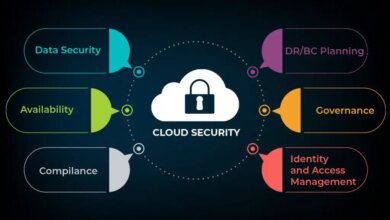
How Not to Become the Victim of Online Fraud
How not to become the victim of online fraud is a question that’s becoming increasingly important in our digital age. With the rise of online shopping, banking, and social interaction, the opportunities for fraudsters to exploit vulnerabilities are multiplying. This blog post will equip you with the knowledge and strategies to navigate the digital world with confidence, safeguarding your personal information and protecting yourself from falling prey to online scams.
We’ll delve into the various types of online fraud, exploring the tactics used by fraudsters and the common schemes they employ. You’ll learn how to recognize phishing attempts, secure your online transactions, and avoid social engineering scams. This information will empower you to make informed decisions and stay one step ahead of potential threats.
Understanding Online Fraud

Online fraud is a growing problem, with criminals increasingly using sophisticated methods to target individuals and businesses. Understanding the different types of online fraud, how they work, and how to protect yourself is crucial to staying safe in the digital world.
Types of Online Fraud
Online fraud encompasses a wide range of criminal activities, each with its unique characteristics and methods. Understanding these different types is crucial for recognizing and preventing fraud.
- Phishing: This involves sending fraudulent emails, text messages, or social media messages that appear to be from legitimate sources, such as banks, online retailers, or government agencies. These messages often attempt to trick victims into revealing sensitive information like passwords, credit card details, or social security numbers.
- Smishing: Similar to phishing, but uses SMS text messages to deceive victims into divulging personal information.
- Vishing: This involves using phone calls to deceive victims into revealing sensitive information. Fraudsters may pose as representatives from banks, credit card companies, or other organizations to gain access to personal data.
- Scams: These can take many forms, including fake online auctions, lottery scams, and romance scams. Fraudsters often create elaborate stories to trick victims into sending money or providing personal information.
- Malware: This involves installing malicious software on a victim’s computer or mobile device. Malware can steal personal information, track online activity, or allow fraudsters to control the device remotely.
- Social Engineering: This involves using psychological manipulation to trick victims into revealing sensitive information or performing actions that benefit the fraudster. This can include building trust with victims, creating a sense of urgency, or exploiting their vulnerabilities.
- Identity Theft: This involves stealing someone’s identity and using it to commit fraud. Identity thieves may use stolen information to open credit cards, take out loans, or commit other crimes.
Common Online Fraud Schemes
Fraudsters are constantly developing new schemes to deceive victims. Here are some common examples of online fraud schemes:
- Fake Online Stores: Fraudsters create fake online stores that appear legitimate, but they never intend to deliver the goods or services purchased.
- Work-at-Home Scams: These scams promise easy money for working from home, but often require victims to pay upfront fees or provide personal information.
- Advance Fee Scams: Victims are promised a large sum of money in exchange for a small upfront payment. However, the promised money never materializes.
- Investment Scams: Fraudsters create fake investment opportunities that promise high returns but are actually designed to steal money from victims.
- Charity Scams: Fraudsters create fake charities or impersonate legitimate charities to solicit donations.
Real-World Scenarios of Online Fraud Victims
Online fraud can affect anyone, regardless of age, income, or technical expertise. Here are some real-world examples of how online fraud can impact individuals:
- A young studentwas tricked into giving away their bank account details after receiving a text message claiming to be from their bank, asking them to verify their account information.
- An elderly couplelost their life savings after falling victim to an investment scam promising high returns on a “secret” investment opportunity.
- A single motherwas scammed out of hundreds of dollars after purchasing a fake product from an online store that appeared legitimate.
Motivations and Tactics of Online Fraudsters
Online fraudsters are motivated by profit and often target individuals who are vulnerable or unaware of the risks. They use a variety of tactics to deceive victims, including:
- Social Engineering: Creating a sense of urgency, building trust, or exploiting vulnerabilities to manipulate victims.
- Impersonation: Posing as legitimate organizations, government agencies, or trusted individuals to gain credibility.
- Phishing: Sending fraudulent emails, text messages, or social media messages to trick victims into revealing sensitive information.
- Malware: Using malicious software to steal personal information, track online activity, or control devices remotely.
- Exploiting Social Media: Using social media platforms to spread scams, target victims, and gather information.
Protecting Your Personal Information
Online fraudsters are constantly seeking opportunities to exploit vulnerabilities and gain access to sensitive data. They target specific personal information that can be used to impersonate you, access your accounts, or commit financial crimes. Understanding what data they seek and implementing strong security measures is crucial to protecting yourself.
Understanding the Targets of Online Fraudsters
Fraudsters are interested in information that can be used to compromise your identity or financial security. This includes:
- Full Name:This is often the first piece of information fraudsters seek to identify you.
- Date of Birth:This, along with your name, can be used to access credit reports and other sensitive information.
- Social Security Number (SSN):The most critical piece of information, as it allows fraudsters to open credit cards, loans, or even steal your identity.
- Financial Information:This includes credit card numbers, bank account details, and other financial data that can be used for unauthorized transactions.
- Home Address:This can be used to target you for scams or physical theft.
- Phone Number:Fraudsters can use this to contact you directly, often through phishing scams or to gain access to your accounts.
- Email Address:Used to send phishing emails, gain access to online accounts, or for identity theft.
Risks of Sharing Personal Information Online
Sharing personal information online comes with inherent risks, as data can be easily intercepted or stolen. Some of the risks include:
- Phishing Scams:Fraudsters use fake websites or emails to trick you into revealing personal information.
- Data Breaches:Companies can experience data breaches where your personal information is stolen by hackers.
- Social Engineering:Fraudsters use manipulation techniques to trick you into revealing sensitive information.
- Malware:Malicious software can be used to steal your data from your computer or mobile device.
- Identity Theft:Fraudsters can use your stolen information to open accounts, make purchases, or commit other crimes in your name.
Best Practices for Safeguarding Sensitive Information
- Be Mindful of What You Share:Only share personal information with trusted sources and avoid posting sensitive details on social media.
- Use Strong Passwords:Create unique and complex passwords for each of your online accounts, and avoid using the same password for multiple accounts.
- Enable Two-Factor Authentication:This adds an extra layer of security by requiring a code from your phone or email in addition to your password.
- Be Cautious of Phishing Emails:Look for suspicious emails, such as those with typos, grammatical errors, or unfamiliar senders. Never click on links in suspicious emails or provide personal information to unknown sources.
- Keep Software Updated:Regularly update your operating system and software to protect against known vulnerabilities.
- Use a Secure Internet Connection:Avoid using public Wi-Fi networks for sensitive transactions, as they can be vulnerable to eavesdropping.
- Monitor Your Credit Report:Check your credit report regularly for any unauthorized activity.
Securing Your Online Accounts
- Use a Password Manager:A password manager can help you generate strong, unique passwords for each of your accounts and store them securely.
- Enable Security Features:Many websites offer security features, such as two-factor authentication, fraud alerts, and password recovery options. Take advantage of these features to enhance your account security.
- Review Account Activity:Regularly review your account activity for any suspicious transactions or unauthorized access.
- Be Vigilant:Be aware of the latest scams and phishing techniques. Stay informed about security threats and take steps to protect yourself.
Recognizing Phishing Attempts
Phishing is a common online scam where fraudsters try to trick you into giving away your sensitive information, such as your passwords, credit card details, or bank account information. They do this by impersonating legitimate organizations or individuals and sending you fake emails, text messages, or directing you to fraudulent websites.
Staying safe online means being vigilant about phishing scams and suspicious links. It’s also important to be aware of the risks associated with investing in emerging markets, like the one explored in this analysis of Warren Buffett and Charlie Munger’s potential concerns about BYD’s growth: analysis did buffett and munger see byds one problem.
While investing can be a great way to build wealth, it’s crucial to do your research and understand the potential risks involved before making any decisions.
Characteristics of Phishing Emails and Websites
Phishing emails and websites often have certain characteristics that can help you identify them as fraudulent.
- Suspicious Sender Address:The email address may look similar to a legitimate organization’s address but with slight variations, like typos or unusual characters. For example, instead of “[email protected],” it might be “[email protected]” or “[email protected].”
- Urgent Tone:Phishing emails often use a sense of urgency to pressure you into taking immediate action. They might claim that your account is about to be suspended or that you need to update your information immediately.
- Grammatical Errors and Poor Formatting:Phishing emails and websites often contain grammatical errors, spelling mistakes, and poor formatting. This is because they are typically created by individuals with limited English proficiency or by automated tools.
- Suspicious Links:Phishing emails often contain links that lead to fake websites that look like legitimate websites. Hover over the link to see the actual URL before clicking. If the URL doesn’t match the website you expect to visit, it could be a phishing attempt.
- Requests for Personal Information:Phishing emails or websites may ask you to provide personal information, such as your password, credit card number, or Social Security number, without any legitimate reason. Legitimate organizations rarely ask for such sensitive information via email or through unsolicited links.
Common Phishing Techniques
Phishing scams come in various forms, and fraudsters are constantly evolving their tactics. Here are some common techniques:
- Spoofing:Phishing emails and websites often spoof the identity of legitimate organizations, such as banks, credit card companies, or social media platforms. They use logos, branding, and email addresses that mimic the real organization to trick you into believing the communication is genuine.
- Baiting:This technique involves offering something enticing, such as a free gift, a discount, or a prize, to lure you into clicking a link or providing your information.
- Spear Phishing:This type of phishing is highly targeted, where fraudsters research their victims and tailor their messages to their specific interests or circumstances. They might use your name, company name, or other personal information to make the email seem more legitimate.
- Whaling:This is a form of spear phishing that targets high-profile individuals, such as CEOs or executives, with the goal of stealing sensitive information or gaining access to corporate networks.
Identifying Suspicious Emails and Links
Here are some tips for identifying suspicious emails and links:
- Check the Sender Address:Pay close attention to the sender’s email address. Look for any typos, unusual characters, or domains that don’t match the organization’s official website.
- Hover Over Links:Before clicking on any link, hover your mouse over it to see the actual URL in the bottom left corner of your browser window. If the URL looks suspicious or doesn’t match the expected website, don’t click it.
- Look for Spelling and Grammar Errors:Phishing emails often contain grammatical errors, spelling mistakes, or poor formatting. If the email looks unprofessional, it could be a scam.
- Be Wary of Urgent Requests:If an email demands immediate action or threatens consequences if you don’t respond quickly, it’s likely a phishing attempt.
- Contact the Organization Directly:If you’re unsure about the authenticity of an email, contact the organization directly through their official website or phone number to verify the request.
Verifying the Authenticity of Websites
Here are some ways to verify the authenticity of a website:
- Check the URL:Look for a secure connection, indicated by “https” at the beginning of the URL and a padlock icon in the address bar.
- Look for Trust Seals:Reputable websites often display trust seals from organizations like VeriSign or McAfee, which indicate that the website has been verified and is secure.
- Check for Contact Information:Look for a legitimate contact page with a physical address, phone number, and email address.
- Use a Website Reputation Checker:There are websites that allow you to check the reputation of a website, such as ScamAdviser or WOT. These tools can help you determine if a website is trustworthy or if it has been associated with scams.
Secure Online Shopping and Transactions
Online shopping has become increasingly popular, offering convenience and a vast selection of goods and services. However, this convenience comes with inherent risks, making it crucial to prioritize security when shopping online.
Identifying Secure Online Shopping Platforms and Payment Methods
Choosing secure online shopping platforms and payment methods is crucial to safeguarding your financial information.
- Look for websites that use HTTPS, indicated by a padlock icon in the address bar, which signifies that the connection is encrypted and data is transmitted securely.
- Favor reputable and well-established online retailers with positive customer reviews and established security measures.
- Utilize secure payment gateways like PayPal, Stripe, and Apple Pay, which offer additional layers of security and protection against fraud.
- Avoid making purchases on websites with suspicious URLs, missing contact information, or overly enticing discounts.
The Importance of Strong Passwords and Multi-Factor Authentication
Strong passwords and multi-factor authentication play a critical role in securing online accounts and preventing unauthorized access.
- Use unique and complex passwords for each online account, combining uppercase and lowercase letters, numbers, and symbols.
- Enable multi-factor authentication (MFA) whenever possible, which requires an additional verification step, such as a code sent to your phone or email, to confirm your identity.
- Consider using a password manager to store and manage your passwords securely, reducing the risk of forgetting or reusing passwords.
Recognizing Fraudulent Websites and Transactions
Fraudulent websites and transactions can be difficult to spot, but there are several red flags to watch out for.
Being vigilant online is crucial to avoid falling prey to fraud. Double-check websites, be wary of unsolicited offers, and never share personal information without verifying the source. If you’re considering a significant investment, like interested in solar panels here is some advice , make sure to thoroughly research the company and their offerings.
Remember, a little extra caution goes a long way in protecting yourself from online scams.
- Beware of websites with grammatical errors, poor design, or suspicious URLs that don’t match the website’s name.
- Be cautious of overly enticing deals, especially those that seem too good to be true.
- Avoid clicking on links or downloading attachments from suspicious emails or messages.
- Check the website’s security certificate, which should be valid and issued by a trusted authority.
Verifying the Legitimacy of Online Sellers
Verifying the legitimacy of online sellers is essential to ensure you’re dealing with a trustworthy party.
- Check the seller’s website for contact information, including a physical address and phone number.
- Look for customer reviews and testimonials on independent websites like Trustpilot or Google Reviews.
- Read the seller’s terms and conditions and return policy carefully to understand their policies and procedures.
- If you have any doubts about a seller’s legitimacy, it’s best to err on the side of caution and avoid making a purchase.
Avoiding Social Engineering Scams

Social engineering scams are a type of cybercrime that relies on manipulating people into giving up sensitive information or granting access to their systems. These scams often exploit human psychology and trust to trick victims into making mistakes that can lead to financial losses or identity theft.
Recognizing and Avoiding Social Engineering Attempts
Social engineering scams often involve building trust and creating a sense of urgency to pressure victims into acting quickly without thinking critically. Here are some tactics used in these scams:
- Impersonation:Scammers may pretend to be someone you know, like a friend, family member, or coworker, or they might pose as a trusted authority figure, such as a bank representative or government official.
- Phishing:Scammers often send emails, text messages, or social media messages that appear to be from legitimate sources, but contain malicious links or attachments. These messages might ask you to update your account information, verify your identity, or download a software update.
It’s easy to get caught up in the excitement of a new adventure, like planning a road trip across the country, but it’s important to stay grounded and protect yourself from online fraud. Remember, even with the allure of the open road, as described in this recent blog post , don’t click on suspicious links or share personal information on untrusted websites.
Staying vigilant online will help you avoid scams and keep your journey smooth sailing.
- Baiting:This tactic involves offering something enticing, such as a free gift, a discount, or access to exclusive content, to lure victims into clicking on a malicious link or providing their personal information.
- Scare Tactics:Scammers might try to scare you into acting quickly by claiming that your account has been compromised, that you owe money to the government, or that you’re in danger.
- Pretexting:This involves creating a believable story or scenario to gain your trust and get you to disclose sensitive information. For example, a scammer might call you pretending to be a police officer and ask for your credit card information to verify your identity.
Protecting Yourself from Social Media Scams, How not to become the victim of online fraud
Social media platforms are often targeted by social engineering scams. Here are some tips to stay safe:
- Be wary of unsolicited messages:Don’t click on links or open attachments from unknown senders, especially if the message seems too good to be true or creates a sense of urgency.
- Verify requests for information:If someone asks you for personal information through social media, verify their identity before providing any details. Contact them through a known channel, such as a phone call or email, to confirm their identity.
- Be cautious about giveaways and contests:Be skeptical of giveaways and contests that require you to provide personal information or click on suspicious links. Legitimate contests and giveaways are usually hosted by reputable organizations and have clear rules and regulations.
- Report suspicious activity:If you encounter a suspicious profile or post, report it to the social media platform. This helps to protect other users from potential scams.
Reporting and Recovering from Fraud: How Not To Become The Victim Of Online Fraud

It’s essential to know what steps to take if you become a victim of online fraud. Reporting the incident promptly and taking proactive steps to minimize financial losses can significantly impact the outcome.
Reporting Online Fraud to Authorities
Reporting online fraud to the appropriate authorities is crucial for several reasons. It allows law enforcement agencies to investigate the crime, potentially apprehend the perpetrators, and protect other potential victims. It also helps you document the incident for potential insurance claims or legal action.
- File a Report with Your Local Law Enforcement Agency:Contact your local police department or sheriff’s office to file a report. Provide detailed information about the fraud, including the date, time, and method used.
- Report to the Federal Trade Commission (FTC):The FTC maintains a database of consumer complaints, which helps identify fraud trends and target perpetrators. You can file a complaint online at the FTC’s website.
- Contact the Internet Crime Complaint Center (IC3):The IC3 is a partnership between the FBI and the National White Collar Crime Center. You can report online fraud through their website, providing details of the incident.
- Report to the Financial Institution Involved:If your bank, credit card company, or other financial institution was involved in the fraud, contact them immediately. They can help you dispute charges, freeze your accounts, and potentially recover funds.
Resources for Victims of Online Fraud
Several resources are available to assist victims of online fraud, offering guidance, support, and information.
- Federal Trade Commission (FTC):The FTC’s website provides comprehensive information on online fraud, including resources for victims, tips for prevention, and guidance on reporting incidents.
- Internet Crime Complaint Center (IC3):The IC3 website offers information about online fraud, resources for victims, and tips for prevention.
- National Center for Victims of Crime (NCVC):The NCVC provides a wide range of resources for victims of crime, including online fraud. They offer support, counseling, and information on legal rights and options.
Steps to Minimize Financial Losses
Acting swiftly and taking proactive steps can help minimize financial losses associated with online fraud.
- Contact Your Financial Institutions:Immediately report the fraud to your bank, credit card company, or other financial institutions involved. They can freeze your accounts, dispute charges, and potentially recover funds.
- Change Passwords and Security Questions:Update passwords for all accounts that may have been compromised, including online banking, email, social media, and shopping websites. Also, change security questions if you believe they may have been compromised.
- Monitor Your Credit Reports:Request free credit reports from all three major credit bureaus (Equifax, Experian, and TransUnion). Review the reports for any suspicious activity and consider placing a fraud alert or security freeze on your credit.
- Report to Credit Bureaus:File a fraud alert with the credit bureaus, which will notify creditors of the potential fraud and require them to verify your identity before extending credit. You can also consider placing a security freeze on your credit, which prevents anyone from accessing your credit report without your permission.
Recovering from Online Fraud
Recovering from online fraud can be a challenging process, but there are steps you can take to minimize the impact and regain control of your finances.
- Document Everything:Keep detailed records of all communications, transactions, and actions related to the fraud. This documentation will be essential for reporting the crime, filing insurance claims, and pursuing legal action.
- Contact Your Insurance Company:If you have identity theft or credit card fraud insurance, contact your insurance company to file a claim. They can provide financial assistance and help with the recovery process.
- Seek Legal Advice:Consider consulting with an attorney specializing in fraud or consumer law. They can advise you on your legal options and assist with pursuing legal action against the perpetrators or any involved parties.
- Be Patient and Persistent:Recovering from online fraud can take time and effort. Be patient and persistent in pursuing all avenues of recovery, including reporting the crime, disputing charges, and working with financial institutions and law enforcement.
Ending Remarks
Being vigilant and proactive is key to staying safe online. By understanding the risks and adopting the best practices Artikeld in this blog post, you can significantly reduce your chances of becoming a victim of online fraud. Remember, knowledge is power, and armed with the right information, you can confidently navigate the digital world with peace of mind.






